Most 1976 dimes are worth only 10 cents face value, regardless of mint mark (D, S, or none). However, uncirculated 1976-D dimes can range from $0.30 to $525 depending on grade. The most valuable is a 1976-D with Full Bands (FB) designation, worth up to $1,500 in high grades. Error coins include clipped planchets (worth about $30 in mint state) and blank planchets (worth a few dollars). Other errors like off-center strikes or double dies can increase value significantly. No major errors like the 1975-S “No-S” proof are known for 1976. Any unusual 1976 dime should be professionally authenticated to determine its specific error and value.
That 1976 dime sitting in your change jar might be worth more than 10 cents—potentially much more. While most 1976 Roosevelt dimes are common circulation coins, certain varieties and errors can command premiums ranging from a few dollars to over $1,500. Understanding which mint marks, grades, and errors to look for could turn pocket change into a valuable collectible worth examining more closely.
Understanding the 1976 Roosevelt Dime Basics
The 1976 Roosevelt dime was minted during America’s Bicentennial year, though unlike quarters and half dollars, dimes didn’t receive special commemorative designs. The United States Mint produced these coins at three facilities: Philadelphia (no mint mark), Denver (D mint mark), and San Francisco (S mint mark for proofs).
Philadelphia and Denver struck circulation dimes, while San Francisco focused on proof coins for collectors. The total combined mintage exceeded 1.1 billion pieces, making 1976 dimes extremely common in circulated condition. Philadelphia produced approximately 568 million, Denver minted roughly 695 million, and San Francisco created about 4.1 million proof specimens.
The composition remained consistent with post-1965 clad coinage: a pure copper core sandwiched between outer layers of 75% copper and 25% nickel. Each dime weighs 2.27 grams with a diameter of 17.91 millimeters and a reeded edge containing 118 ridges.
Philadelphia Mint: No Mint Mark Values
Philadelphia dimes lack a mint mark, appearing on the obverse just above the date on coins from other facilities. For standard circulation strikes, these coins trade at face value when worn. Even in uncirculated condition, most examples bring only modest premiums.
According to Greysheet pricing data, 1976 Philadelphia dimes grade as follows:
| Grade | Value |
|---|---|
| MS-60 | $1.50 |
| MS-63 | $2.25 |
| MS-65 | $4.50 |
| MS-67 | $35.00 |
The Full Bands designation matters significantly for Roosevelt dimes. This refers to the horizontal bands across the torch on the reverse—when all bands show complete separation with sharp definition, the coin earns the Full Bands (FB) designation. Full Bands 1976 Philadelphia dimes are considerably scarcer, with MS-67 FB specimens reaching $125 to $175 at auction.
Professional grading services like PCGS and NGC have certified thousands of 1976 Philadelphia dimes, but only a small percentage achieve Full Bands status, particularly in grades above MS-65.
Denver Mint: The D Mint Mark Premium
The 1976-D represents the highest mintage of the three facilities, yet paradoxically offers the greatest potential value for collectors. Denver strikes show better overall quality than Philadelphia coins, with higher percentages achieving Full Bands designation.
Standard 1976-D dimes in circulated condition remain at face value. Uncirculated examples without Full Bands show these approximate values:
| Grade | Value Range |
|---|---|
| MS-60 | $0.30 – $1.00 |
| MS-63 | $1.25 – $2.50 |
| MS-65 | $3.50 – $8.00 |
| MS-66 | $15.00 – $35.00 |
| MS-67 | $125.00 – $525.00 |
The real premium appears with Full Bands specimens. A 1976-D graded MS-67 FB sold through Heritage Auctions in 2023 for $1,380. Another MS-68 FB example—representing the finest known specimen—brought $1,500 at a Stack’s Bowers auction. These prices reflect the rarity of finding perfect band separation on high-grade examples.
PCGS population reports indicate fewer than 50 coins have achieved MS-67 FB or higher grades for the 1976-D date, making it genuinely scarce in top condition with Full Bands.
San Francisco Proofs: Mirror Finish Collectibles
The San Francisco Mint produced only proof versions in 1976, struck specifically for collectors. These coins feature sharp details, mirror-like fields, and frosted devices created through special polishing and multiple strikes.
Standard 1976-S proofs were sold in annual proof sets. In typical proof condition (PR-65 to PR-67), these coins trade between $2 and $5. Deep Cameo specimens—showing strong contrast between frosted designs and mirrored backgrounds—command slightly higher prices at $5 to $12 for PR-68 grades.
Unlike 1975, no “No S” error proofs are known for 1976. The famous 1975 No S proof dime, missing its mint mark entirely, sold for $456,000 at auction in 2019, making it one of the most valuable Roosevelt dimes. While collectors hoped similar errors might occur in 1976, none have been authenticated to date.
Proof dimes with Deep Cameo designation in PR-69 condition can reach $35 to $75, with a single PR-70 Deep Cameo specimen selling for $288 in 2022—representing absolute perfection.
Error Coins: When Mistakes Mean Money
Mint errors occur when something goes wrong during the striking process. Several error types exist for 1976 dimes, varying widely in value based on dramatic appearance and rarity.
Clipped Planchet Errors happen when the metal strip feeding into the coin press overlaps, causing the cutting die to clip a previous punch hole. This creates a coin with a curved section missing from its edge—typically 5% to 25% of the planchet. Circulated clipped planchet dimes trade for $3 to $8 depending on clip size. Mint state examples with significant clips (20% or more) can reach $30 to $50, according to HobbyLark’s error coin pricing.
Blank Planchet Errors are unstruck planchets that somehow escaped the minting process without receiving any design. These smooth, blank dime-sized discs typically sell for $2 to $5. They’re relatively common errors since planchets occasionally miss the striking chamber.
Off-Center Strikes occur when the planchet sits incorrectly positioned under the dies during striking. Minor off-center errors (5-10%) bring $10 to $25. More dramatic examples showing 30-50% off-center with a visible date command $75 to $150. A 1976-D dime struck 60% off-center sold for $185 in 2021.
Broadstrike Errors happen when the retaining collar fails, allowing the coin to spread beyond normal diameter during striking. These expanded, thinner dimes typically measure 19-21mm instead of the standard 17.91mm. Values range from $15 to $45 for clear examples.
Double Die Errors show doubling on design elements due to die manufacturing issues. No major double die varieties are listed for 1976 dimes, but minor doubling on lettering or Roosevelt’s profile occasionally appears. These bring $5 to $20 depending on doubling visibility.
Wrong Planchet Errors are extremely rare but valuable—a dime design struck on a planchet intended for another denomination. A Roosevelt dime struck on a cent planchet would be worth several hundred dollars, though no confirmed examples exist for 1976.
Grading Matters: Condition Determines Value
Understanding coin grading is essential for accurate valuation. The Sheldon Scale runs from 1 to 70, with higher numbers indicating better preservation.
Circulated Grades show wear from handling:
- Good (G-4): Heavy wear, major design elements visible but flat
- Fine (F-12): Moderate wear, all major features clear
- Extremely Fine (EF-40): Light wear on highest points only
- About Uncirculated (AU-50 to AU-58): Slight wear on highest points, most mint luster remains
Mint State Grades show no circulation wear:
- MS-60 to MS-62: Uncirculated but with numerous contact marks
- MS-63 to MS-64: Average mint state with moderate marks
- MS-65 to MS-66: Choice quality with minimal marks
- MS-67 to MS-69: Gem quality with tiny imperfections
- MS-70: Theoretical perfection, extremely rare
For Roosevelt dimes specifically, check the torch bands on the reverse. Using 5x magnification, examine whether the horizontal bands show complete separation across their full width. If all bands separate distinctly, the coin qualifies for Full Bands designation, significantly increasing value in mint state grades.
Authentication and Professional Grading
If you suspect you’ve found a valuable 1976 dime error or high-grade specimen, professional authentication becomes worthwhile. The two major grading services—Professional Coin Grading Service (PCGS) and Numismatic Guaranty Corporation (NGC)—provide third-party verification and encapsulation.
Grading fees typically start around $20 per coin for standard service, reaching turnaround times of 4-6 weeks. Economy tier works fine for coins potentially worth $50-$200. Higher-value items benefit from premium services with faster turnaround and additional insurance.
Before spending on professional grading, honestly assess your coin’s potential. A circulated 1976 dime with a small clip isn’t worth the grading fee. However, an apparent MS-67 condition 1976-D with Full Bands could justify the investment, potentially returning several hundred dollars profit.
Local coin shops often provide free initial opinions. Bring suspect coins in protective holders—never clean them, as cleaning destroys collectible value. Dealers can quickly identify whether professional grading makes financial sense.
For authentication of major errors, services like PCGS Error Verification explicitly identify and document error types, preventing disputes over error authenticity when selling.
Where to Buy and Sell 1976 Dimes
Online Marketplaces like eBay host thousands of Roosevelt dime listings. Search completed sales to gauge actual selling prices rather than asking prices. Heritage Auctions and Stack’s Bowers regularly feature high-grade and error examples in their numismatic auctions, establishing market values through competitive bidding.
Local Coin Dealers provide immediate transactions but typically offer wholesale prices (60-70% of retail) when buying. They’re convenient for quick sales but maximize their profit margins.
Coin Shows bring together multiple dealers and collectors, creating competitive environments that often yield better prices for sellers. Major shows occur monthly in most metropolitan areas.
Online Dealers specializing in Roosevelt dimes, like Modern Coin Mart or APMEX, purchase graded specimens at published buy prices, offering transparency but wholesale-level pricing.
When buying investment-grade pieces, insist on professionally graded coins in tamper-evident holders. This guarantees authenticity and grade, protecting against counterfeits and overgrading. Raw (ungraded) coins trade at significant discounts but carry more risk.
Building a 1976 Dime Collection Strategy
Starting a 1976 Roosevelt dime collection offers an accessible entry into numismatics. A basic three-coin set—Philadelphia, Denver, and San Francisco proof—costs under $10 in average circulated or proof condition.
Intermediate collectors pursue higher grades, targeting MS-65 or better examples from each mint. This requires patience searching rolls or purchasing graded specimens, with total investment reaching $15-$30 for the set.
Advanced specialists chase Full Bands designations, particularly the challenging 1976-D MS-67 FB. Building a complete Full Bands set of all three mints in MS-67 represents a significant achievement, requiring several hundred dollars and considerable searching.
Error collectors focus on assembling various error types across the year. A representative error collection might include clipped planchet, off-center strike, and broadstrike examples, costing $50-$150 total depending on error severity and condition.
Registry sets through PCGS and NGC allow collectors to compete for finest-known collections, ranking submissions by grade and completeness. This competitive aspect drives premiums for top-population coins.
Spotting Potential Treasures in Pocket Change
While finding valuable 1976 dimes in circulation has become increasingly unlikely after nearly 50 years, possibilities still exist. Bank tellers occasionally receive old rolls from estate settlements or long-term savers.
When searching rolls, examine each coin under adequate lighting with at least 5x magnification. Look for:
- Completely unmarked surfaces suggesting mint state preservation
- Sharp, fully separated torch bands on the reverse
- Any unusual appearances—wrong size, missing design elements, off-center strikes
- Proof-like mirror surfaces indicating possible San Francisco specimens
Sort finds into categories: circulated common, potential mint state, possible Full Bands, and suspected errors. Use cotton gloves when handling potentially valuable uncirculated specimens—fingerprints reduce grades and values.
Coin roll hunting typically yields face value results, but occasional discoveries justify the effort for dedicated searchers. One collector reported finding a 1976-D in MS-66 FB condition in a 2018 bank roll, later selling it for $425.
Maximizing Value From Your 1976 Dimes
If you’ve identified a potentially valuable 1976 dime, protect it immediately in a non-PVC plastic holder or cardboard flip. Never clean coins with any substance—natural toning is desirable, while cleaning creates microscopic scratches that destroy value.
Store coins in stable environments away from humidity and temperature fluctuations. Professional grading encapsulation provides optimal long-term protection through inert plastic holders.
Research current market values using multiple sources: PCGS Price Guide, NGC Price Guide, and completed eBay auction results. This establishes realistic expectations before selling.
Time sales strategically when possible. Major auctions in January and summer attract serious buyers, potentially driving higher prices. Avoid immediate sales unless financially necessary—coin markets fluctuate, and patience often rewards sellers.
Document provenance when selling higher-value pieces. Photographs, receipts, and history add appeal and potentially increase prices, particularly for error coins with interesting discovery stories.
Consider joining numismatic organizations like the American Numismatic Association, which provides access to expert knowledge, publications, and networking with serious collectors who pay premium prices for quality material.
Your 1976 dime collection—whether a single coin or specialized set—connects you to American history and the fascinating world of numismatics. Whether that connection proves worth 10 cents or $1,500 depends entirely on which specific coins you discover and how carefully you’ve preserved them.
You may be interested:
- 1859 Indian Head Penny Coin Value Complete Errors List And No Mint Mark Worth Guide For Collectors
- 1911 V Nickel Coin Value Guide Complete Errors List And No Mint Mark Worth Today
- 1902 Dime Coin Value Complete Errors List With O S And No Mint Mark Worth Guide
- 1788 Quarter Coin Value Complete Guide Errors List And D S P Mint Mark Worth Revealed
- 1776 To 1976 Bicentennial Half Dollar Coin Value Complete Errors List And What Your D S And No Mint Mark Coins Are Actually Worth
- 1990 Penny Coin Value Errors List How D S And No Mint Mark Pennies Are Worth Thousands Of Dollars

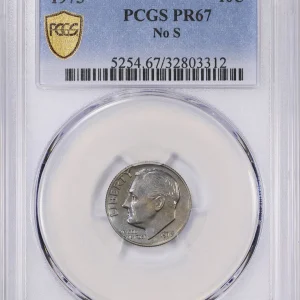
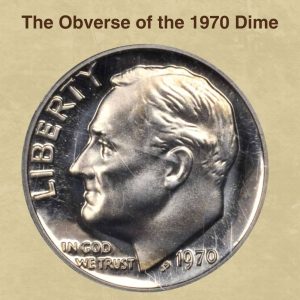
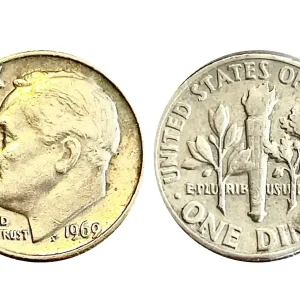
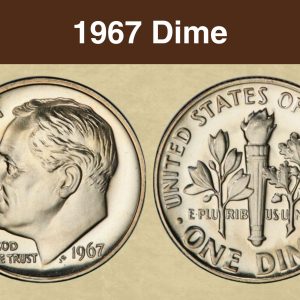
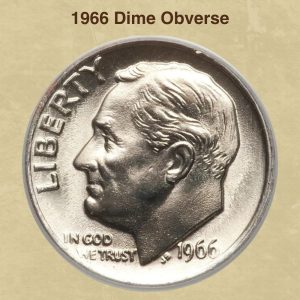
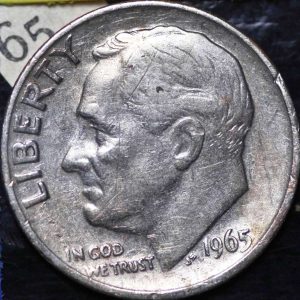
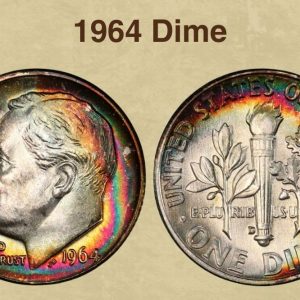
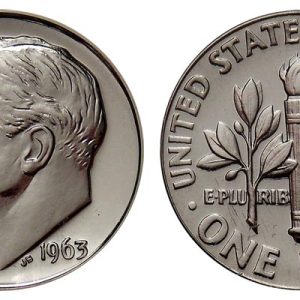
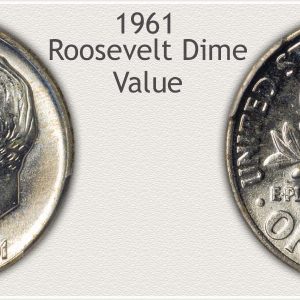
Which Dimes with no mint mark are worth money?
1965 Roosevelt Dime, No Mint Mark. … 1968-S No-S Roosevelt Proof Dime. … 1970-S Roosevelt Dime, No Mint Mark. … 1972-S Roosevelt Dime. … 1975 No-S Roosevelt Dime. … 1982 and 1983 Roosevelt Dimes, No Mint Mark. … 1996-W Roosevelt Dime. … 1998-P Bonded Group of Roosevelt Dimes.
What errors to look for on Dimes?
1965 10C – Struck on a Silver Planchet. … 1969-D 10C Missing Clad Layer. … 1970-D 10C Struck 50% Off-Center. … 1980-P 10C – Struck on a Defective Copper Core Planchet. … 1996-P 10C – Broadstruck with Obverse Brockage. … 1999-D 10C – Broadstruck on a Cent Planchet. … Bonus: 1942/1 10C – MS67+